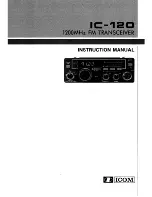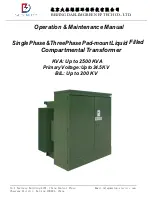
16
Section 3
Model 752 and 752A Differential Pressure Transmitters
Table 3.1—Cable Specifications
Loop Resistance/1000 ft
(ohms @ 20°C)
Cable Wire Size
5.06
14 AWG, 2 Wires
8.04
16 AWG, 2 Wires
12.78
18 AWG, 2 Wires
20.30
20 AWG, 2 Wires
4-20 mA
10-50 mA
200 400 600 800 1000 1200 1400 1600 1800 2000 2200 2400 2600 2800 3000
2900
1160
70
60
50
40
30
20
10
Total Loop Resistance (Ohms) (Load Transmission Line)
Power Supply Range (Volts)
Any voltage or resistance within the
shaded area for the respective
transmitter output is acceptable.
Figure 3.3—Power supply and loop resistance
Care must be exercised when calculating the power supply output voltage. A
power supply specified as 50Vdc ±1 volt must be considered a 49Vdc source
to ensure the minimum required voltage at the transmitter. Use the actual
value when available; otherwise, use "worst case" value.
Use
as a reference to determine if the maximum calculated value
of R
T
= R
Line
+ R
Load
+ R
Ext
is correct.
Loop Resistance Calculations
Use the following method to calculate the loop resistance value.
Transmitter Current = I
DC
(20 mA or 50 mA)
R
T
= V
DC
- T
VDC
I
DC
Total Loop Resistance (R
T
) = R
Line
+ R
Load
+ R
Ext
Power Supply Voltage = V
DC
(70 V max. for 4-20 mA or 10-50 mA Systems)
Maximum Transmitter Voltage = T
VDC
(70 V for both 4-20 mA and 10-50 mA Systems)
Minimum Transmitter Voltage = T
VDC
(12 V for both 4-20 mA and 10-50 mA Systems)
















































